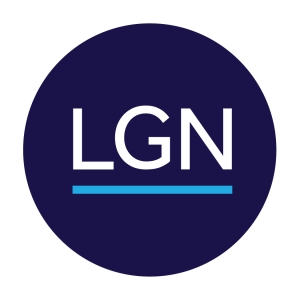As part of Minnesota’s and other states’ reopening measures, state and local governments are requiring employers – before opening – to implement preparedness plans which adopt guidelines from the Centers for Disease Control and Prevention (CDC), federal and state Occupational Safety and Health Administration (OSHA), and state Departments of Health to combat the spread of COVID-19. These safeguards include:
- Personal hygiene and respiratory etiquette;
- Engineering and administrative controls for social distancing;
- Housekeeping – cleaning, disinfecting and decontamination;
- Prompt identification and isolation of sick persons;
- Communications and training that will be provided to managers and workers; and
- Management and supervision necessary to ensure effective implementation of the plan.
In addition to meeting the minimum requirements to comply with executive orders and recommended guidelines, employers need to be proactive leaders in reducing the risk of future outbreaks as businesses reopen. Experts predict COVID-19 will be a constant threat until a vaccine is ready for mass distribution in 12-18 months under the most optimistic forecasts. Some experts suggest 50-60% of the population will be exposed to the virus before a vaccine is ready. Many in the medical community are looking not just to states and cities, but also to businesses, who can play a critical role in social distancing, testing, and contact tracing to minimize the risk of transmission and make the country safer. This means the preparedness safeguards are not just for the short term. It also means that employers need to develop thoughtful policies which balance the interests and rights of individual employees with the interest of protecting the workforce and community at large.
Some components of preparedness plans are straightforward – such as describing handwashing and respiratory etiquette rules. Other requirements raise difficult issues for employers. For example, employers are required under many executive orders to put in place policies for screening employees exhibiting symptoms of COVID-19 and preventing transmission in the workplace. This mandate raises numerous issues and policy decisions that must be addressed in employee policies. Here are a few of those issues.
COVID-19 TESTING AND MONITORING EMPLOYEE HEALTH
Employee health self-reporting and inquiry
- Temperature checks– Measuring an employee’s body temperature constitutes a medical examination. Mandatory medical tests must be “job related and consistent with business necessity.”– Applying this standard, EEOC guidance allows employers to measure employees’ body temperatures at work during the COVID-19 pandemic. Employees with fevers could then be tested for COVID-19.– Be aware that not all COVID-19 positive cases involve a fever.
- Reporting symptoms– Employees should self-report if they are experiencing symptoms of the pandemic virus (fever, cough, chills, shortness of breath, sore throat, lack of sense of taste or smell, muscle aches, toe rash, gastrointestinal problems (including nausea, diarrhea and vomiting)). *The list of symptoms could expand as public health authorities learn more about the virus.– EEOC guidance allows employers to inquire whether employees are experiencing symptoms of the pandemic virus.– Should employees be encouraged to report other employees who appear sick?
- Encourage or require employees to get the seasonal flu vaccine given the increased risk that will be posed by the flu during a pandemic.– Medical experts emphasize the critical importance of flu vaccinations in the expected fall/winter “second wave” of COVID-19.– EEOC has said no law prohibits mandatory vaccination policies, although exemptions might apply under Title VII and the ADA.– State and local laws might require vaccines for certain industries. Watch for executive orders on this subject.
- Employers should designate a point person in charge of health reporting and testing.
COVID-19 Testing:
- EEOC guidance allows employers to administer COVID-19 testing to employees before they enter the workplace to determine if they have the virus. Under the Americans with Disabilities Act (ADA), a mandatory medical test must be “job related and consistent with business necessity.” Under the current circumstances, employers are allowed to determine if employees entering the workplace have COVID-19 because an individual with the virus will pose a direct threat to the health of others.
- Employer-provided access to rapid diagnostic testing if an employee becomes ill will facilitate screening for those with mild symptoms who might not otherwise seek out a test.
- The EEOC says employers should:– Ensure the tests are accurate and reliable. Employers should rely on FDA, CDC, and state health officials’ guidance and updates.– Consider the incidence of false-positives or false-negatives associated with a particular test.– Remember that accurate testing only reveals if the virus is currently present; a negative test does not mean the employee will not acquire the virus later.
- Other issues regarding testing:– What are the parameters of permissible testing?– What tests satisfy the EEOC guidance?– What frequency of employee testing would be permissible?– Where should the testing take place and who should administer the tests?– How are employers to “consider” false positives or negatives associated with a particular test?– What is the protocol for isolating the employee and departing the workplace after a positive test?
– What is the protocol for temperature checks?
DEALING WITH A POSITIVE TEST RESULT
If an employee tests positive:
- Contact tracing. Ask the employee to identify co-workers they have been in “close contact” with for the past 14 days (CDC defines “close contact” as being within 6 feet of someone for a prolonged period of time. Prolonged is currently defined as 10 minutes).
- Ask (but do not pressure or require) employee if they are comfortable disclosing their identity to other employees.
- Notify those co-workers that they might have been in contact with someone who tested positive, direct them to immediately leave the workplace to self-isolate and monitor the symptoms for 7 days, and direct them to CDC website and to consult their physician.
- Do not reveal the employee’s identity unless the employee volunteers the disclosure.
- Notify all employees that someone in the workplace has tested positive for COVID-19 and direct them to monitor themselves and immediately report symptoms. Assure employees that business is taking all the necessary precautions regarding hygiene in the office
Other issues related to a positive test:
- Is it a reportable event under OSHA? https://www.osha.gov/memos/2020-04-10/enforcement-guidance-recording-cases-coronavirus-disease-2019-covid-19
- Criteria for returning to work – at least 3 days without a fever and at least 7 days from last symptoms.
- Whether to require a doctor’s note certifying fitness for duty.– Given the current strain on the health system, consider waiving this.
- Different guidelines apply for critical infrastructure workers.
AVOID DISRUPTION TO EMPLOYEES’ PAY
- Employees should be encouraged and not discouraged from self-reporting symptoms and possible exposure to COVID-19 positive individuals. Provide pay while employee is self-isolating, staying home while awaiting test results, or has been required to stay home after being identified as a close contact of someone testing positive, or has traveled to a high-risk area.
- If employee has the ability to telework, employers can require work from home during these times.
- Emergency Paid Sick Leave (EPSL) is available for employee’s own quarantine when the employee has symptoms and is seeking a diagnosis or a health care provider directs or advises the quarantine and the employee is not able to telework due to COVID-19 related illness.
- EPSL and Emergency Family and Medical Leave Act leave (EFMLA) are also available for the employee to care for a family member diagnosed with COVID-19 or in quarantine, or to care for a child whose school or day care is closed due to the pandemic, and the employee is unable to work (or telework) their normal schedule.See https://www.locklaw.com/federal-covid-19-response-federal-family-medical-leave-expansion-paid-sick-leave/
ACCOMMODATION ISSUES
- Absent undue hardship, employers should accommodate employees with underlying medical conditions that are not disabling in and of themselves but put them at higher risk for COVID-19.
- Similarly, absent undue hardship, employers should accommodate an employee who refuses to come to work because of a preexisting mental health condition that is exacerbated by COVID-19.
- What about employees who are afraid to return to work but do not have an underlying medical condition?
- Without a preexisting diagnosis, when does anxiety rise to the level of a mental health condition that needs to be accommodated?
- Employers may ask questions to determine whether the condition is a disability, discuss with the employee how the requested accommodation would assist her or him to keep working, explore alternative accommodations, and request medical documentation if needed.
- Undue hardship, which means “significant difficulty or expense,” might be different before and after the pandemic.
CONFIDENTIALITY ISSUES
- EEO laws (including the Americans with Disabilities Act, the Rehabilitation Act, Title VII, the Age Discrimination in Employment Act, and Genetic Information Nondiscrimination Act) apply during the COVID-19 pandemic. However, these laws do not prevent employers from following guidelines of the CDC or state/local public health authorities.
- All COVID-19 medical information, including testing results and temperature checks, is confidential and must be stored separately from the personnel files. This information can be stored in the employee’s existing medical file.
- As discussed above, the identity of an employee testing positive should not be disclosed to other employees without his or her consent. However, the employer may disclose the name of the employee testing positive for COVID-19 to a public health agency.
- A staffing agency or contractor may notify the employer and disclose the name of an employee testing positive.
OTHER POLICIES GEARED TOWARD PREVENTION OF TRANSMISSION
- Require continued use of telework where possible.
- Avoid or limit in-person meetings.
- Avoid or limit business travel.– Require employees to work from home following personal travel (to other cities and international)
- Consider options to help employees avoid mass transit, particularly at busy times.– Stagger shifts to off-rush hour times– Subsidize parking or ride-share services– Encourage car-pooling– Deploy corporate transport
- Close the break room or limit occupancy.– Prohibit on-site meal preparation
- Discourage employees from wandering out to food courts for lunch.– Encourage bringing lunches in sealed containers– Organize delivery of lunch in prepackaged containers
- Require employees to wear masks when in contact with the public, other employees, or in common areas – employers must bear the cost of the masks.– Many state and local governments require masks as part of executive orders– OSHA rules might apply if employer requires masks
ANTI-RETALIATION, DISCRIMINATION POLIC



